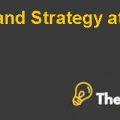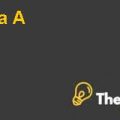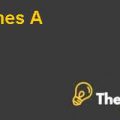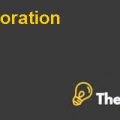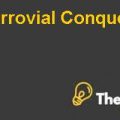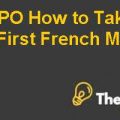Principles Of Organization Behavior Case Solution
Question 3 (a)
Based on the case, Bill Day’s leadership which was more of democratic and charismatic leadership style. As he was the type of leader who always put the employees first and took decision to decrease the gap between the upper and the lower management. Example of this was abolishing separate mess system and adopting the single mess system for all employees. This shows that, Bill Day was concerned about all his employees and wanted to involve and treat them as equal in decision making (Dessler & Starke, 2004).
Question 3 (b)
Yes, Bill Day is an effective leader who believes in leading by example. As he abolished the separate mess system to avoid the special treatment with specific level of employee. He is the strong proponent of equality. So, by empowering employees and building the trust amongst them, he wanted to improve their productivity and loyalty. One example of his concern for his employees was when he helped his employees to get fitness, just to help them get rid of the diseases.
Question 4 (a)
As in the case of Sea works, Bill Day tried to build and improve trust amongst his employees, which can be considered one the of key success factors of the company. Kurt Lewin’s three-step change process providence guidance on how to change people in an organization to achieve success:
1st-step: Unfreeze
Due to continuously working in one way, people in the organizations become used to do just routine work and it is difficult to make someone unlearn, what he/she is doing on day to day basis. These habits become the reasons of inefficiencies in the organization. So by unfreezing the environment, organization culture must be made ready to change by assessing the needs for change. Which in this case was, people had become used to the daily tasks, and Bill Day always tried to bring in change to avoid ineffectiveness.
2nd–Step:Change
The second step is the requirement of a change that must be implemented, which may take some time but is always worthwhile in the long-run. As Bill Day always tried to build a culture where every employee trusts and respects the other employees irrespective of his status and seniority level.
3rd - Step: Freeze
The last step is to freeze or make it stick to the change. This makes the company able to gain organizational effectiveness, which further helps the company in building its good brand image, because now its employees will become its major strength, which will help the company to survive in the long-run (Dessler & Starke, 2004).
Question 4 (b)
As Bill Day says, employees are the major strength of his company and he always tried to own his employees. However, there are potential challenges, which can be raised if change is to be implemented in the company. As most of employees who are accustomed to carry out day to day task and if they don’t find any attractive incentive in changing and it’s very difficult to motivate these employees to change. As to continue with the same level of trust and respect amongst the employees, it’s very difficult to change the existing culture of the organization.
Most of the employees first consider and look at the cost and benefits associated with the change, so it’s very challenging to make all the employees agreed on a price to change, because each employee has his own preference about the costs and benefits. Moreover, employees always fear the unknown, except very few employees who prefer to be experimental in their workplace, which can be a potential challenge. It also can become difficult to maintain the same level of trust after implementing the change, because most of the employees fear the failure and change means there is a greater uncertainty because the tasks will be unknown and risks of failure can become very high after the change is implemented or introduced in the organization. (Dessler & Starke, 2004).........
This is just a sample partical work. Please place the order on the website to get your own originally done case solution.


